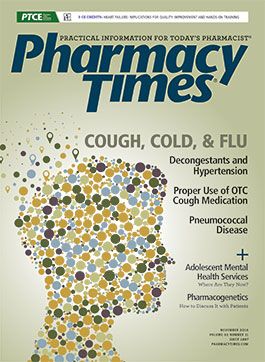Preventing Accidental Overdoses with Fluorouracil
Preventing errors with fluorouracil is the goal for those who prescribe, dispense, or administer this cytotoxic drug.
The Institute for Safe Medication Practices (ISMP) has received several reports of accidental overdoses with fluorouracil. The drug was one of the first intravenous cancer drugs and is still a mainstay in combination curative or palliative therapy regimens treating breast, colorectal, head and neck, gastric, pancreatic, anal, bladder, cervical, hepatobiliary, and esophageal cancers.1
Impaired clearance of the drug and medication errors are usually responsible for adverse events.1 Errors with fluorouracil are often caused by dose miscalculations, confusion between the dose per day and the total dose to infuse over multiple days, infusion-pump programming errors, lack of pump programming safeguards, use of the wrong type of infusion pump in outpatient settings, failed independent double-checks, confusing pharmacy labels, and lack of familiarity with the chemotherapy protocol.2
In one report submitted to ISMP, a patient received a 5-fold overdose of fluorouracil. The recommended dose was 200 mg/m2/day continuous infusion for 5 days, but the oncologist wanted the treatment to infuse for only 100.5 hours (4.2 days), not a full 5 days (120 hours). Based on the patient’s body surface area of 1.4 m2, the pharmacist calculated the patient’s daily dose to be 280 mg. He divided the daily dose by 24 hours to calculate an hourly dose of 11.66 mg, which he multiplied by 100.5 hours to obtain the correct course dose of 1172 mg. He then erroneously multiplied that course dose by 5 days and prepared an infusion containing a total of 5860 mg of fluorouracil to infuse over 100.5 hours. Although pharmacy policy required verification by another pharmacist of the patient-specific dose based on the mg/m2 dose, the checking process was overlooked and the infusion was dispensed. When the patient arrived in the oncologist’s office to have the continuous infusion stopped, the staff noticed that the patient had received the incorrect dose of 5860 mg. The patient was admitted to the hospital, where he received the antidote, uridine triacetate, and was monitored.
Preventing errors with fluorouracil is the goal for those who prescribe, dispense, or administer this cytotoxic drug. Consider the following risk-reduction strategies:
- Prescribers: order fluorouracil clearly in single daily doses (not course doses), with directions to infuse continuously over a specific number of days or hours (eg, 750 mg/m2/day continuous infusion, days 1 through 5).
- Review the processes by which certification is granted to prescribers, pharmacists, and nurses who order, dispense, and administer fluorouracil and other chemotherapy. Ensure that staff exhibit and maintain an appropriate level of skills, knowledge, and abilities before working independently.
- Encourage the use of smart pumps in ambulatory care settings to maximize safety features, such as dose alerts, dosing and flow rate limits, and feedback to allow detection of pump programming errors. If possible, use only 1 type of ambulatory pump throughout the organization.
- Educate staff to program and connect ambulatory infusion pumps. Ensure that initial and ongoing competency validation is maintained.
- Develop a structured process for conducting and documenting independent double-checks after preparation and prior to administering fluorouracil (and all chemotherapy agents).
- Ensure that the information needed to program an infusion pump is prominently displayed in a standard and consistent way on pharmacy labels and that it sequentially matches the information entered into the infusion-pump fields. Eliminate extraneous information (eg, mL per 24 hours) and communicate infusion rates as hourly rates only.
- Instruct patients, especially those receiving ambulatory fluorouracil infusions, about reporting symptoms and to call with questions or concerns they may have about the infusion pump or drug delivery system. In addition, teach patients about the total dose they are receiving and the length of time the infusion should last, and periodically check to ensure the volume is not infusing too quickly.
- Recognize overdoses and toxicity promptly, and provide treatment, following defined treatment protocols, as soon as toxicosis or an overdose is identified.'
Dr. Gaunt is a medication safety analyst and the editor of ISMP Medication Safety Alert! Community/Ambulatory Care Edition.
References
- Schwartzberg LS, Vogel WH, Campen CJ. Methotrexate and fluorouracil toxicities: a collaborative practice approach to prevention and treatment. The ASCO Post. 2014;5(suppl 7).
- Institute for Safe Medication Practices. Fluorouracil error ends tragically, but application of lessons learned will save lives. ISMP Medication Safety Alert! 2007;12(19):1-3.

